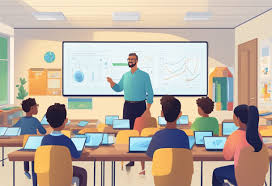The challenge of making complex STEM concepts accessible and engaging for young learners has led innovative teachers to embrace the unique capabilities of kids animated shows as instructional tools. The visual nature of animation offers distinct advantages for explaining abstract scientific principles, mathematical relationships, and technological processes that might otherwise remain difficult to conceptualize. By combining accurate scientific content with compelling storytelling, educational animations transform potentially intimidating STEM subjects into accessible adventures that capture children’s imagination while building foundational knowledge.
Educational researchers have identified several mechanisms through which animated content effectively supports STEM learning. Visualization of abstract concepts represents perhaps the most significant advantage—animations can make the invisible visible, allowing children to observe molecular interactions, mathematical relationships, or engineering principles that would otherwise remain conceptual. Dynamic representations show processes unfolding over time, helping children understand sequential relationships and causal mechanisms. Additionally, animated environments can manipulate scale dramatically, enabling journeys from the subatomic to the cosmic that would be impossible to demonstrate through traditional teaching methods.
The ability to simplify complex systems without sacrificing accuracy makes animation particularly valuable for introducing foundational STEM concepts. Quality educational animations typically begin with developmentally appropriate simplifications that capture essential principles while omitting potentially overwhelming details. As storylines progress and characters deepen their understanding, additional complexity can be introduced gradually, mirroring the scaffolded approach effective teachers employ in classroom instruction. This progressive revelation of complexity helps children build mental frameworks that can accommodate increasingly sophisticated understanding as their cognitive development advances.
Physics education benefits tremendously from animated demonstrations that visualize forces, energy transfers, and motion principles. Concepts like inertia, momentum, and energy conservation become more comprehensible when children can observe them operating in engaging animated scenarios. When characters experiment with simple machines, build structures, or design vehicles, they model the engineering design process while demonstrating physics principles in action. Many physics teachers report that referencing familiar animated examples provides effective anchoring points for introducing more formal scientific explanations.
Biological processes that occur at microscopic levels or over extended timeframes become accessible through the time and scale manipulation capabilities of animation. Cellular functions, evolutionary changes, and ecological relationships can be visualized in ways that help children grasp systems too small, too large, or too slow to observe directly. The narrative structures of animation also help children understand the interconnected nature of biological systems, as animated characters often journey through different components of ecosystems or bodily systems, demonstrating relationships between seemingly discrete elements.
Mathematical concepts gain concrete representation through animated visualizations that demonstrate abstract relationships. Geometric transformations, proportional relationships, and algebraic concepts can be embedded within animated narratives that show their practical applications. When animated characters solve problems requiring mathematical thinking, they demonstrate the relevance of mathematical concepts to real-world challenges. Many mathematics teachers report that referencing these animated examples helps students overcome the “when will I ever use this?” barrier that sometimes impedes mathematical engagement.
Computer science and computational thinking receive increasing attention in contemporary educational animations. Several shows now incorporate basic programming concepts, algorithmic thinking, and problem decomposition within age-appropriate storylines. When animated characters break complex problems into manageable steps, test potential solutions, and debug their approaches, they model the cognitive processes central to computer science education. These animations help demystify technology and present computational thinking as an accessible and creative endeavor rather than an intimidating technical domain.
Environmental science education benefits from animation’s ability to visualize complex ecological relationships and long-term environmental changes. Animated content can compress time to show gradual processes like climate change, habitat succession, or population dynamics that unfold too slowly for direct observation. By following animated characters through different ecosystems or observing the environmental impacts of various human activities, children develop systems thinking capabilities essential for understanding environmental challenges. These visualizations help abstract concepts like sustainability become concrete and meaningful.
Engineering design processes feature prominently in many contemporary STEM-focused animations. When animated characters identify problems, brainstorm solutions, test prototypes, and refine their designs, they model the iterative nature of engineering work. These portrayals help children understand that failure represents a normal part of the design process rather than an endpoint, promoting the growth mindset essential for STEM persistence. Many engineering educators use these animated examples to introduce design thinking approaches in classroom settings.
The most effective STEM education approaches combine quality animated content with hands-on experimentation and guided discussion. Research indicates that when teachers use animations to introduce concepts, followed by related hands-on activities that allow children to test principles themselves, learning outcomes improve significantly. This multimodal approach addresses different learning styles while reinforcing concepts through varied exposure. As digital learning tools continue to evolve, this integration of animated content within comprehensive STEM education strategies offers promising pathways for developing the scientific literacy needed for an increasingly technological future.

